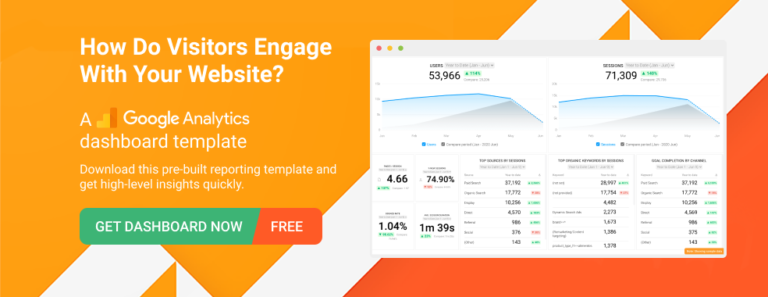
In the ever-evolving world of SEO, one thing remains constant: user engagement is a critical factor in determining search rankings. As Google’s algorithms become more sophisticated, they increasingly rely on signals that reflect how users interact with your content. Understanding and leveraging engagement data can be a game-changer for improving your website’s visibility in search results.
This article will guide you through the process of using engagement data effectively, from understanding what it means to implementing strategies that boost your rankings. Whether you’re an experienced marketer or just starting out, this step-by-step approach will help you unlock the power of engagement metrics.
What Is Engagement Data and Why It Matters
Engagement data refers to the information collected about how users interact with your website. This includes metrics like Time on Page, Dwell Time, Bounce Rate, Click-Through Rate (CTR), and Scroll Depth. These metrics provide insights into how users perceive your content and whether it meets their expectations.
While engagement data isn’t a direct ranking factor, it plays a crucial role in signaling to search engines that your content is valuable and relevant. Google uses these signals as part of its broader algorithm to determine which pages should rank higher. For example, if users spend a significant amount of time on your page and don’t immediately leave, it suggests that your content is useful — a strong indicator of quality.
Key Engagement Metrics:
- Time on Page: Measures how long users stay on a specific page.
- Dwell Time: The time between when a user clicks on a result and returns to the search engine.
- Bounce Rate: The percentage of visitors who leave after viewing only one page.
- Scroll Depth: How far users scroll down a page.
- Click-Through Rate (CTR): The ratio of users who click on a link to the number of times the link is shown.
These metrics are essential for understanding user behavior and optimizing your content accordingly.
How Engagement Data Impacts SEO Performance
Engagement data influences SEO in several ways:
1. User Experience Signals
Google prioritizes websites that offer a positive user experience. If users quickly exit your site or don’t engage with your content, it could signal that your site isn’t meeting their needs. On the flip side, high engagement can indicate that your content is helpful and well-structured.
2. Content Relevance
Pages with high engagement are often seen as more relevant to user queries. Search engines use this data to determine whether your content aligns with the intent behind a search.
3. Ranking Factors
Although not a direct ranking factor, engagement data indirectly affects rankings by influencing other factors like dwell time, bounce rate, and CTR. Pages with better engagement tend to perform better in search results.
4. Algorithm Updates
Google’s RankBrain and other machine learning systems analyze engagement data to refine search results. These systems learn from user behavior and adjust rankings based on patterns observed over time.
By focusing on engagement, you’re not only improving user satisfaction but also aligning with Google’s evolving priorities.
Step-by-Step Implementation Framework
To effectively use engagement data, follow this structured approach:
1. Define or Audit the Current Situation
Start by identifying where your website stands in terms of engagement. Use tools like Google Analytics, SEMrush, or Ahrefs to gather data on key metrics such as Time on Page, Bounce Rate, and CTR.
- Key Actions:
- Set up goals in Google Analytics to track user actions.
- Analyze traffic sources and identify high-performing pages.
- Look for patterns in user behavior across different devices.
2. Apply Tools, Methods, or Tactics
Once you have a baseline, implement strategies to improve engagement:
- Optimize Content Quality: Ensure your content addresses user intent and provides value.
- Enhance User Experience: Improve page load speed, mobile responsiveness, and navigation.
- Add Interactive Elements: Use quizzes, videos, and infographics to keep users engaged.
- Improve Internal Linking: Guide users to related content and encourage exploration.
3. Measure, Analyze, and Optimize

Continuously monitor your performance and make data-driven adjustments:
- Track KPIs: Monitor changes in Time on Page, Bounce Rate, and CTR.
- Conduct A/B Testing: Experiment with different headlines, CTAs, and layouts.
- Use AI Tools: Platforms like PageTest.AI and Hotjar can help analyze user behavior and suggest improvements.
Regularly reviewing your data ensures that you’re making progress and staying ahead of the curve.
Real or Hypothetical Case Study
Let’s look at a hypothetical case study to illustrate how engagement data can drive improvements:
Scenario: A blog focused on digital marketing has a high bounce rate and low Time on Page.
Actions Taken:
– Conducted a content audit and identified underperforming posts.
– Added interactive elements like quizzes and videos.
– Improved mobile optimization and page speed.
Results:
– Bounce rate dropped from 65% to 40%.
– Average Time on Page increased from 1.5 minutes to 3.5 minutes.
– Organic traffic grew by 30% within three months.
This example shows how addressing engagement issues can lead to measurable improvements in both user experience and search rankings.
Tools and Techniques for Engagement Data
Here are some of the most effective tools for analyzing and leveraging engagement data:
- Google Analytics – A comprehensive tool for tracking user behavior and engagement metrics.
- SEMrush – Offers insights into competitor performance and keyword trends.
- Ahrefs – Helps analyze backlinks and content performance.
- PageTest.AI – Uses AI to test and optimize engagement metrics.
- Hotjar – Provides heatmaps and session recordings to understand user interactions.
- Lighthouse – A tool for auditing website performance and user experience.
Each of these tools offers unique features to help you gain deeper insights into user behavior and improve your SEO strategy.
Future Trends and AI Implications
As AI continues to shape the future of SEO, engagement data will play an even more critical role. Google’s RankBrain and other machine learning systems are already using engagement signals to refine search results. In the coming years, we can expect even more advanced algorithms that prioritize user-centric content.
Key Trends to Watch:
- Voice Search Optimization: As voice searches grow, engagement data will help tailor content to conversational queries.
- Multimodal Search: Google is experimenting with combining text, images, and video in search results, making engagement data even more important.
- Personalization: AI will enable more personalized search experiences, requiring content that resonates with diverse user segments.
Staying ahead of these trends means focusing on creating high-quality, engaging content that meets user needs and drives meaningful interactions.
Key Takeaways
- Engagement data is a powerful tool for improving SEO performance.
- Metrics like Time on Page, Bounce Rate, and Dwell Time provide insights into user behavior and content quality.
- Optimizing content and user experience directly impacts engagement and rankings.
- Tools like Google Analytics and PageTest.AI help track and analyze engagement data effectively.
- Future trends like AI and voice search will further emphasize the importance of engagement.
By focusing on engagement, you’re not only improving your website’s performance but also aligning with Google’s evolving priorities. Start today by analyzing your current engagement metrics and implementing strategies to enhance user experience.
Meta Title: How to Use Engagement Data to Boost Your Website’s Rankings
Meta Description: Learn how to leverage engagement data to improve your website’s SEO performance and boost search rankings.
SEO Tags (5): engagement data, SEO strategy, user experience, content optimization, search rankings
Internal Link Suggestions:
– [Parameter #3]: Technical Performance & Core Web Vitals
– [Parameter #7]: AI & Search Evolution
– [Parameter #9]: Content Strategy & E-E-A-T
External Source Suggestions:
– Google Analytics
– SEMrush Blog
– Backlinko







